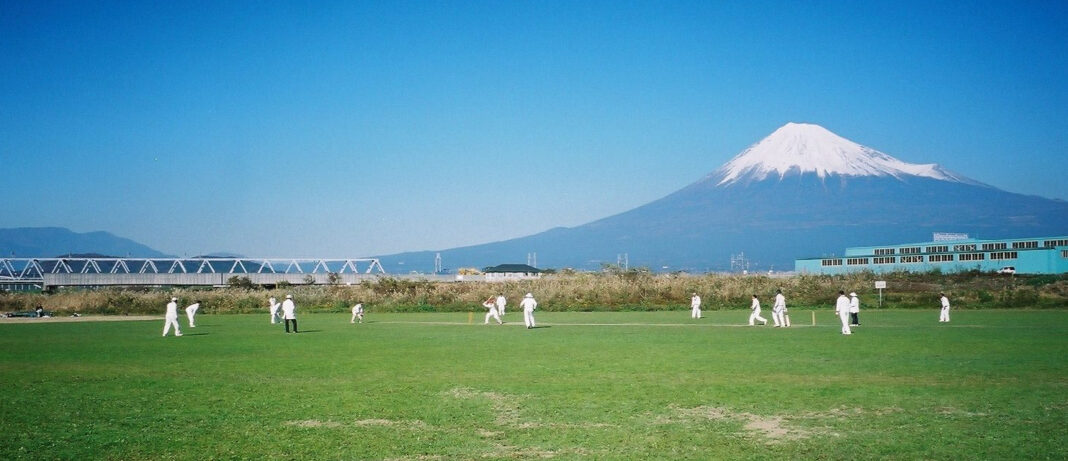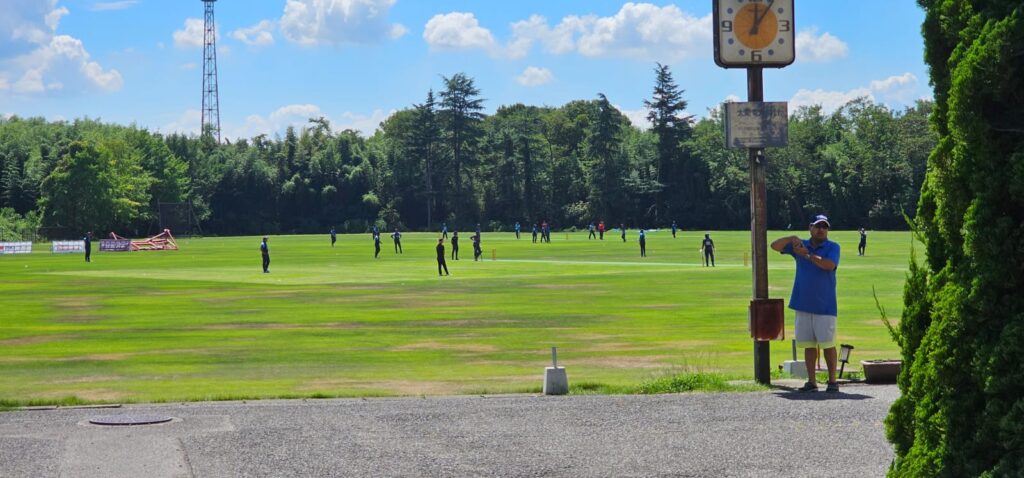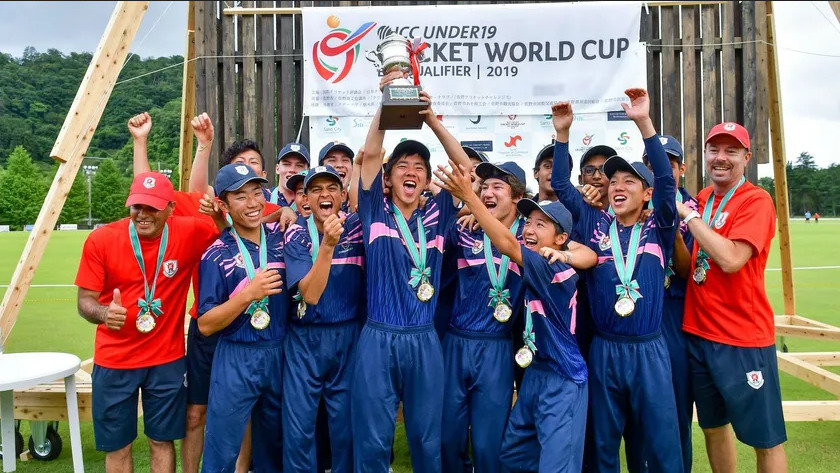
“The players are so humble and nice. They take on board what you say, they don’t challenge your decisions that much, there is no sledging and certainly no abuse. It was kind of amusing really, I sometimes wondered if this was some sort of cordial fraternity,” chuckles Sagir Parkar reminiscing about his recent cricketing trip to Japan.
A full-time health professional, the India-born Parkar is a passionate cricket enthusiast who also doubles up as an Australian grade cricket umpire in his spare time. Recently, he sat down with Emerging Cricket to talk about his recent trip to Japan, his experiences of umpiring in an Associate nation and the exciting potential of the sport in the Land of the Rising Sun.
Life as an Umpire
Parkar’s umpiring journey started 17 years ago, when he was residing in England for work purposes. “I passed my umpiring exams in late 2006. Afterwards I stood in 3-4 games in the Shepherd Neame League in Essex, which I really enjoyed. I did some more umpiring in the Meller Braggins League in 2008, before stepping up to the Cheshire County League from 2009 to 2012.”
Looking to settle in a sunnier climate and embrace a more relaxed lifestyle, Parkar uprooted his life in England to migrate to the land Down Under. Unfortunately, work and personal issues took its toll and prevented him from doing too much officiating in Queensland. “I really missed it you know. Fortunately, I have been able to rekindle my love for umpiring again after moving to Western Australia in 2022. Been doing regular games in the WA Premier League now,” he says.
How the Opportunity Came About
Parkar’s interest in Japanese cricket actually came about by pure chance. On a quest online to find some new and interesting cricket related podcasts to listen to, he accidentally stumbled across a couple of episodes of the Japan Cricket Podcast. “I listened to Alan Curr (Japan Cricket’s Head of Operations) discuss their domestic tournament structures and detail their struggles to get hold of a groundskeeper. I was immediately intrigued! As ever since I was a kid, I have been fascinated with anything Japanese, whether its technology, bullet trains, anime, culture or food. My first trip there was in 2016 and it was basically love at first sight,” exclaims Parkar.
He reached out to Japan Cricket Association (JCA) via their website in December 2021, detailing his willingness to assist with umpiring on a short-term basis. “Honestly, I wasn’t really expecting to hear back from them. But to my surprise and delight, I got an email back from Alan Curr himself within two days.”
Parkar and Curr gelled well from the outset maintaining regular email correspondence from there on. It was over a Zoom session in February, earlier this year, that an agreement was made for Parkar to travel to Japan for four weeks to officiate in JCA’s domestic competitions. “It was the perfect opportunity. I would be in Japan for a substantial period of time, umpire in games at the weekend whilst being able to travel around on the weekdays and see the country,” he states.
Umpiring in Japan
Now back in Australia, Parkar reminisces with great fondness about his unique and fantastic experience in Japan. “I certainly had great fun for the most part, apart from a little incident with dehydration. But that’s what umpiring in the hot and humid Japanese weather in August does to you,” he chuckles.
Japan’s domestic cricket season generally runs for six months, spanning the months from April to September and sometimes even early October. There is a collection of tournaments for male and female participants, as well as junior leagues for the U19 and U15 kids. Parkar himself umpired in two separate competitions; a 40-over tournament known as the Japan Cricket League (JCL) and its new sister T20 version, the JCL T20.

“The cricket culture there feels so foreign and yet quite familiar in many ways,” he says. “It was funny to see how the batters always think they are not out and the bowlers always think the batters are out. That is consistent across England, Australia or Japan, no matter where you go.”
However, Parkar describes that there are some noticeable differences too. “Because Japan is such a young and fledgling cricketing country, the players remain very polite, especially ones who are born and brought up there. They don’t even glare or look you in the eye. The game just flows at a completely different level,” he smiles.
Local Cricket Scene
At the heart of the local cricket scene is Sano International Cricket Ground (SICG), a lush and picturesque oval situated an hour and a half away from Tokyo by public transport. This is where Parkar was based for the duration of his stay. “Sano is so beautiful. They have six playable cricket grounds of which SICG is the main hub and three turf pitches. The facilities are top notch.”

There are other cricket grounds located in the towns of Miyashita, Akishima, Edogawa and Sanmu. Alongside Sano, these constitute a quartet of cricket facilities on the western, northern and eastern outskirts of Tokyo-Yokohama’s sprawling megalopolis. In 2020, Kaizuka Cricket Field in Osaka opened its doors, helping establish the sport’s presence outside its traditional heartland of Kanto for the first time.
The interview then turns to the topic of the local player pool. There are currently around 4,000 registered cricketers in Japan with the players hailing from a diverse array of ethnic backgrounds. “Predominantly, the local cricket landscape is still made up of South Asians with a few Australian and British participants sprinkled in. However with the kids, particularly the U-17 and U-19 generation, you have a lot of players with one or two Japanese parents playing right alongside local-born children of expat heritage, which was absolutely brilliant to see,” says Parkar.

“What I found most heartening from this trip is that I got to see first-hand the next generation of Japanese talent. Let me tell you, there are some fantastic players there. They just need regular exposure and more practice on proper turf pitches to develop their technical skills, because in terms of athleticism in the field they are second to none,” he exclaims.
Exciting Developments and Future
While, most people associate Japan with its traditional sports of sumo wrestling, judo and karate, it is baseball and soccer that reign supreme in the mainstream consciousness. Other sports like tennis, basketball, boxing, golf and rugby are also popular. In the face of so much sporting competition, cricket struggles for mainstream attention and remains a niche sport in the wider cultural context. But Parkar assures me that it is making steady progress.
“While I was there, one of the local TV channels featured the JCA and cricket in one of its morning segments. They even explained what the rules of the sport are; this kind of media attention is priceless in a nation where not many people know what cricket is.”
Meanwhile, JCA has been trying to press the relevant stakeholders to include cricket in the 2026 Asian Games, set to be hosted by Japan. With the sport also in consideration for entry into the LA 2028 Olympics, new sponsorship opportunities and government funding could be tapped into by JCA if cricket is included in both. This would provide an essential long-term boost to the sport. As for Parkar, he is already busy planning his next trip to Japan. “I am heading back to Japan for 6-7 weeks in April-May 2024 to do more umpiring. Hopefully I can help with the coaching too as I now have a Level 1 certificate. Accommodation has already been tentatively booked. I can’t wait!”
You’re reading Emerging Cricket — brought to you by a passionate group of volunteers with a vision for cricket to be a truly global sport, and a mission to inspire passion to grow the game.
Be sure to check out our homepage for all the latest news, please subscribe for regular updates, and follow EC on Twitter, Facebook, LinkedIn and YouTube.
Don’t know where to start? Check out our features list, country profiles, and subscribe to our podcast. Support us from US$2 a month — and get exclusive benefits, by becoming an EC Patron.






